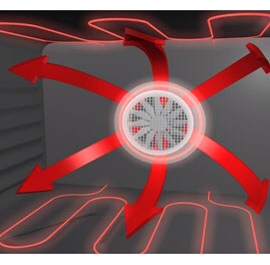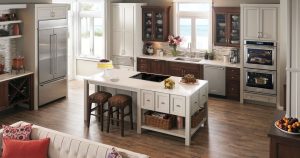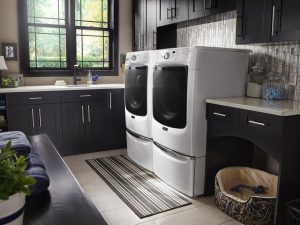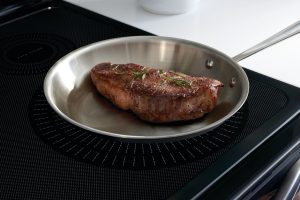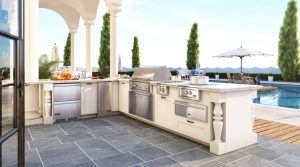A Primer on Convection Cooking
What you should know about convection cooking.
If you have a convection range or oven and don't use it, or if you are considering a new range or oven here are the essential facts you should know.
Here's how convection works – the theory behind convection cooking.
Convection ovens rapidly move hot air past food making it possible to cook better, faster, and at a lower temperature. They are fan operated to force the hot air over and around the food, and typically have separate convection elements surrounding the fans to assist in providing heat. Most residential convection ovens are selective use. This means that users can choose when to use convection and when not to use convection.
Here are the important advantages and disadvantages of convection cooking.
Advantages
- Using convection for roasting reduces cooking time by as much as 25%.
- Using convection for baking provides consistent results cooking at a lower temperature for the same amount of time.
- Because of the consistent temperature throughout the oven cavity, using convection allows for cooking on all the racks at the same time. Cookies baked on the top rack will come out exactly the same as cookies baked on the bottom rack.
- Cooking with convection will provide superior results. Roasts will have a dark caramelized exterior, and remain juicy and tender inside. Baked goods will brown evenly and stay moist.
Disadvantages
- Convection cooking may require adapting standard recipes to achieve proper results.
- There is no benefit to using convection in casserole dishes or other containers that do not allow hot air to circulate around the food. For example, there is no reason to use the convection feature to bake Lasagna.
Here is what you should consider before buying.
All convection ovens are not created equal. Each manufacturer will tout their specific convection system as having better features than than others. Here are some feature differences and explanations. You should decide for yourself which features to consider in your purchase decision.
- Does the convection system have a heating element surrounding the convection fan? Most convection ovens will have a heating element surrounding the fan or fans. The element may cycle on and off in accordance with the thermostat, or depending on the type of food being cooked to provide precise results. Some convection ovens do not have separate elements surrounding the convection fan. Heat is provided only by the bake element in the bottom and broil element in the top of the oven. The fan merely circulates the existing oven air.
- Does the fan operate at different speeds for different foods? Ovens with this capability will use a higher fan speed for roasting meets and a lower fan speed for baking.
- Does the oven have more than one fan? Some ovens have two fans for better coverage. The fans may be surrounded by a single “bow-tie” or “butterfly” type element or individual elements.
- Do the controls have an auto-conversion feature? Though there are a variety of systems for converting recipes, many ovens are equipped with controls that provide an automatic method of converting recipes from conventional to convection.
Though the above are some of the key features to consider, oven manufacturers might have their own pet or exclusive features or explanations of how their ovens differ. You may hear of different methods of pulling or pushing the air through the oven cavity or channeling air in a certain fashion. Decide for yourself whether these pitches are marketing hype or whether they provide significant points of differentiation.
Convection has proven to be reliable and effective method for cooking most foods, and provides superior results. For more information on cooking with convection consult the experts at Universal Appliance and Kitchen Center.
Universal Appliance and Kitchen Center
12025 Ventura Blvd. Ste B-105
Studio City, CA 91604
PH 877 696-2987
facebook twitter
- Designing the Ultimate Outdoor Bar: Must-Have Appliances for Year-Round Fun
- Luxury Refrigerator Guide 2025: Built-In vs. Freestanding and What to Know Before You Buy
- How Smart Appliances Are Changing Luxury Kitchen Design in 2025
- The Ultimate Outdoor Grill Guide for 2025: Built-In vs. Freestanding
- Smart Bathroom Faucets & Fixtures in 2025: Blending Technology with Luxury Design
- Built-In Coffee Machines: Are They Worth It for Your Kitchen in 2025?
- How to Choose the Right Dishwasher for Your Home: Noise, Capacity, and Features Explained
- Top 5 Kitchen Appliance Colors and Finishes for 2025 (And How to Match Your Style)
- Why a Countertop Ice Maker is a Must-Have for Summer Kitchen Upgrades in Southern California
- How to Remove Scratches from Stainless Steel Luxury Appliances


